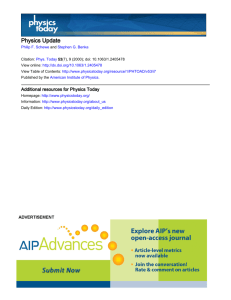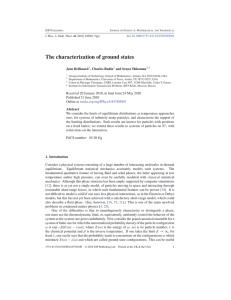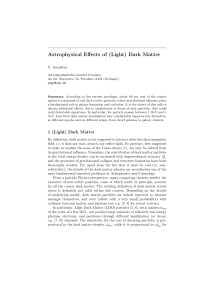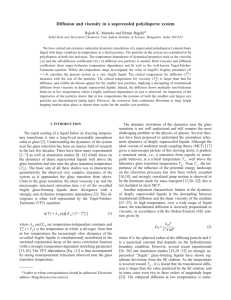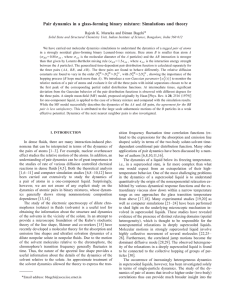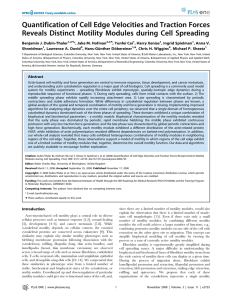Collective motility under self-diffusiophoresis Gareth P. Alexander
advertisement
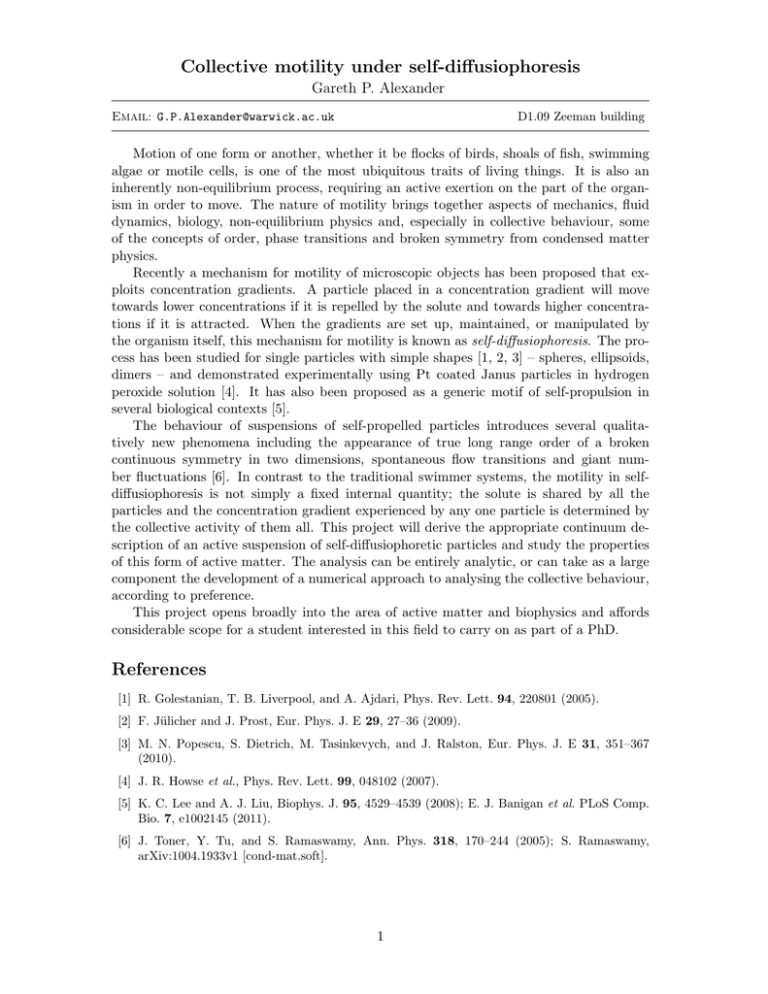
Collective motility under self-diffusiophoresis Gareth P. Alexander D1.09 Zeeman building Email: G.P.Alexander@warwick.ac.uk Motion of one form or another, whether it be flocks of birds, shoals of fish, swimming algae or motile cells, is one of the most ubiquitous traits of living things. It is also an inherently non-equilibrium process, requiring an active exertion on the part of the organism in order to move. The nature of motility brings together aspects of mechanics, fluid dynamics, biology, non-equilibrium physics and, especially in collective behaviour, some of the concepts of order, phase transitions and broken symmetry from condensed matter physics. Recently a mechanism for motility of microscopic objects has been proposed that exploits concentration gradients. A particle placed in a concentration gradient will move towards lower concentrations if it is repelled by the solute and towards higher concentrations if it is attracted. When the gradients are set up, maintained, or manipulated by the organism itself, this mechanism for motility is known as self-diffusiophoresis. The process has been studied for single particles with simple shapes [1, 2, 3] – spheres, ellipsoids, dimers – and demonstrated experimentally using Pt coated Janus particles in hydrogen peroxide solution [4]. It has also been proposed as a generic motif of self-propulsion in several biological contexts [5]. The behaviour of suspensions of self-propelled particles introduces several qualitatively new phenomena including the appearance of true long range order of a broken continuous symmetry in two dimensions, spontaneous flow transitions and giant number fluctuations [6]. In contrast to the traditional swimmer systems, the motility in selfdiffusiophoresis is not simply a fixed internal quantity; the solute is shared by all the particles and the concentration gradient experienced by any one particle is determined by the collective activity of them all. This project will derive the appropriate continuum description of an active suspension of self-diffusiophoretic particles and study the properties of this form of active matter. The analysis can be entirely analytic, or can take as a large component the development of a numerical approach to analysing the collective behaviour, according to preference. This project opens broadly into the area of active matter and biophysics and affords considerable scope for a student interested in this field to carry on as part of a PhD. References [1] R. Golestanian, T. B. Liverpool, and A. Ajdari, Phys. Rev. Lett. 94, 220801 (2005). [2] F. Jülicher and J. Prost, Eur. Phys. J. E 29, 27–36 (2009). [3] M. N. Popescu, S. Dietrich, M. Tasinkevych, and J. Ralston, Eur. Phys. J. E 31, 351–367 (2010). [4] J. R. Howse et al., Phys. Rev. Lett. 99, 048102 (2007). [5] K. C. Lee and A. J. Liu, Biophys. J. 95, 4529–4539 (2008); E. J. Banigan et al. PLoS Comp. Bio. 7, e1002145 (2011). [6] J. Toner, Y. Tu, and S. Ramaswamy, Ann. Phys. 318, 170–244 (2005); S. Ramaswamy, arXiv:1004.1933v1 [cond-mat.soft]. 1

